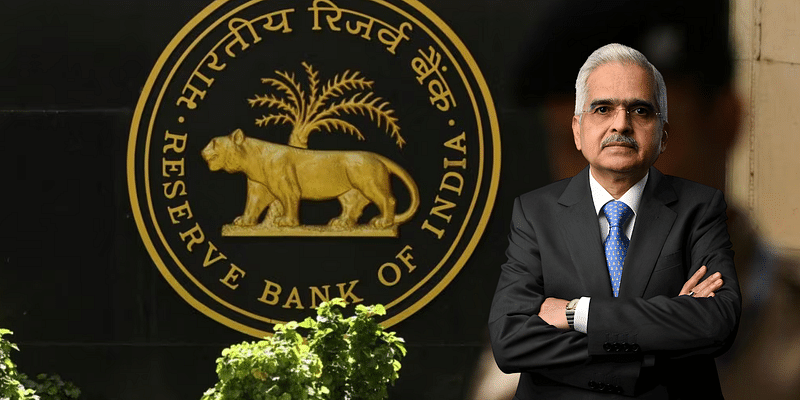Sanjay Garg, Founder, Raw Mango on being a 'fashion' entrepreneur
Friday February 25, 2011 , 5 min Read

Sanjay Garg isn't your average fashion designer. He hails from a small village in Rajasthan, doesn't believe in fashion shows and works with traditional weavers to bring out contemporary hand woven textiles. In fact, it was his work with Chanderi weavers (spearheading the design and marketing of their products) that led him to be declared as the winner of the British Council's Young Fashion Entrepreneur Award for 2010. To know more about the Young Fashion Entrepreneur Awards, visit this page - http://www.britishcouncil.org/india-arts-iyfey-fashion.htm. To follow the Young Creative Entrepreneur Awards on Facebook, check out http://www.facebook.com/YCEAwards. In this exclusive interaction with YourStory, Sanjay speaks about his venture Raw Mango and selling products based on merit rather than glamour.Sanjay, if someone asked you tell them about Raw Mango in less than 50 words, what would you say?
Raw Mango deals with contemporary hand woven textiles, such as saris, fabrics and stoles, which retails through various exhibitions and at high end stores in different parts of India.
Tell us about your background.
I was born and brought up in a small village called Mubarikpur in Rajasthan. I studied in a Hindi-medium school because there wasn't an English-medium school in my village. I used to come to Jaipur during my summer vacations and very soon, I realized that I was lagging behind in terms of exposure. The village education was cutting me off from the world. So, I moved to Jaipur for graduation and I also did my M.Com there. After that, I joined the Indian Institute of Craft & Design. I was there for a year and in the meantime, I got through NIFT and moved there.
Craft school provided a great foundation and exposed me to the depths of design. But it was at NIFT that I developed the sensibilities of textile design. I worked for Shades Of India for a couple of years. Then, I wanted to go abroad and study further. To pay for that, I started taking small projects individually. One such project was the Chanderi Cluster Development Programme. I came in contact with the weavers through this and once that happened, I didn't see any reason in going to the West.

So, how did Raw Mango start? Also, why did you pick the name 'Raw Mango'?
I've always believed in minimalism. I was doing a lot of minimalist design work. I got the opportunity to show Jaya Jaitley some of my designs and she really liked them. But when I took it back to my weavers, they weren't too sure that it would be accepted. Also, they did not have the capital to invest in that collection. So, I borrowed Rs.90,000 from my father and got them made. And my very first show saw everything being sold out. As soon as the stall opened, one person wanted to buy everything. To avoid embarrassment, Jaya Jaitley asked me to quote an obscene price so that the offer would be rescinded. But the gentlemen agreed to that price and bought it anyway. That's how Raw Mango started. From the beginning, the design was meant for a high-end audience. But we ensured that the weavers got their fair share of rewards and recognition.
As far as the name Raw Mango is concerned, it stems from my belief that beauty lies in imperfections. I found that 'Raw Mango' was the perfect metaphor for this phenomenon.
Tell us about the kind of products that Raw Mango makes. Also, are you looking at participating in fashion shows?
At Raw Mango, we make sarees, dupattas, stoles and fabrics. The experiment with Chanderi weavers has been very successful. So, we are looking at replicating that success across the Benarasi and Ikat clusters as well. The products are designed with the intention of bringing together traditional weaving skills and contemporary design sensibilities. Design-wise, Indian stuff is very 'busy', with a lot of elements. And originally, the Chanderi textile palette is very limited and comprises of predominantly earthy colours. We have placed the focus on the heart of the design and expanded the colour palette.
To be honest, we are not looking at fashion shows. We don't want to sell using gimmickry or glamour. It's terribly insulting to the weavers. We believe in making quality products backed by great design. Currently, we sell at only high-end stores and that too, without any advertising.
How did you hear about the YCE Awards? Also, tell us about your experience at YCE.
I heard about YCE on the internet and applied. I was selected for the finals. I went and showed my work. The panel loved it. I was very comfortable with their questions and I spoke the truth, plain and simple. And they gave me the award. I had decided early on that I wouldn't change the design to suit the West. The idea was (and is) to take our uniqueness there. I'm very happy that I won the award and I'm looking forward to my trip to UK.
We at YourStory wish Sanjay and Raw Mango all the best. To know more, check out http://www.rawmango.in
Do let us know about your thoughts on this story. You can write to us at [email protected].
Sriram Mohan | YourStory | 26th February 2011 | Bangalore








![[Startup Bharat] Y Combinator-backed BeWell Digital is enabling the digital transformation of radiologists](https://images.yourstory.com/cs/2/40d66ae0f37111eb854989d40ab39087/ImagesFrames31-1648033042143.png)
![[Funding alert] Electric vehicle startup Simple Energy in talks to raise $1M](https://images.yourstory.com/cs/2/11718bd02d6d11e9aa979329348d4c3e/Imagehrn6-1595836341886.jpg)
![[Jobs roundup] Work with India's ecommerce giants with these openings](https://images.yourstory.com/cs/2/3fb20ae02dc911e9af58c17e6cc3d915/shutterstock1309228252-1586865525072.png)